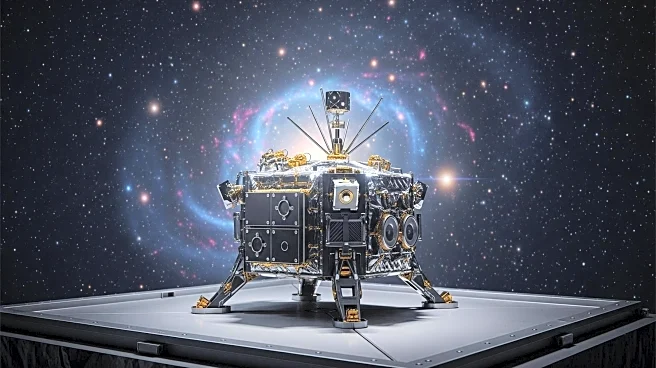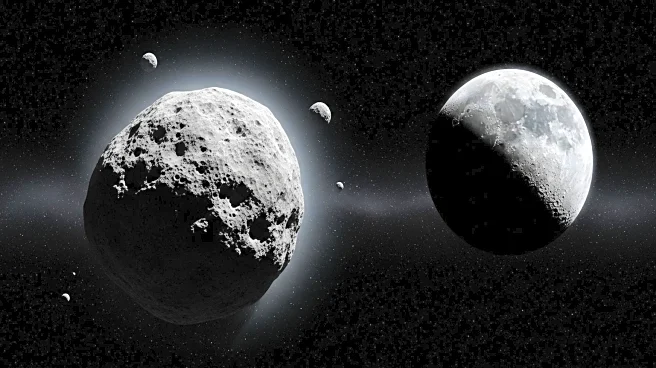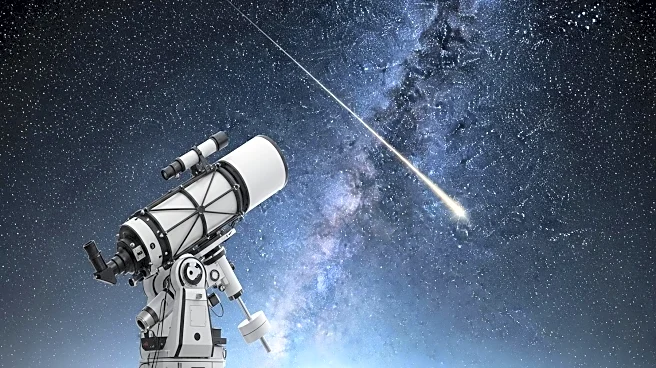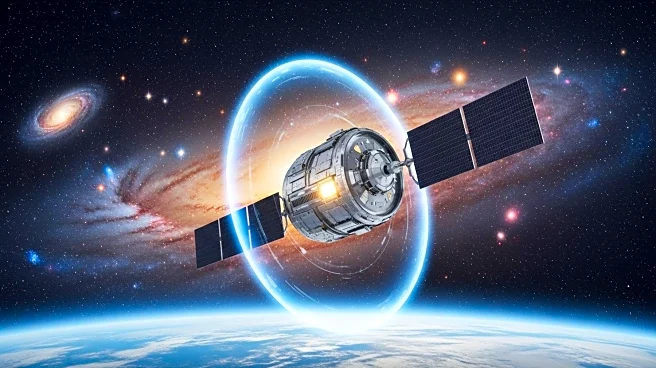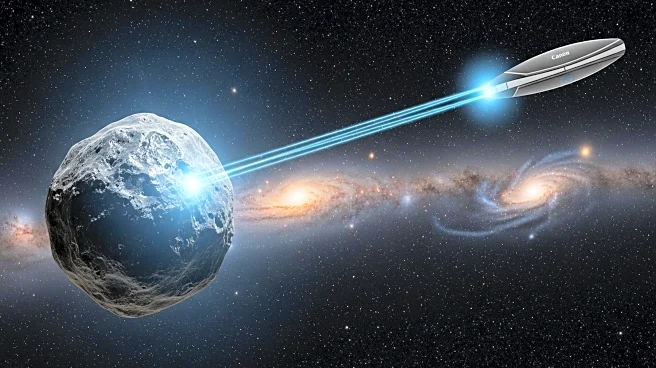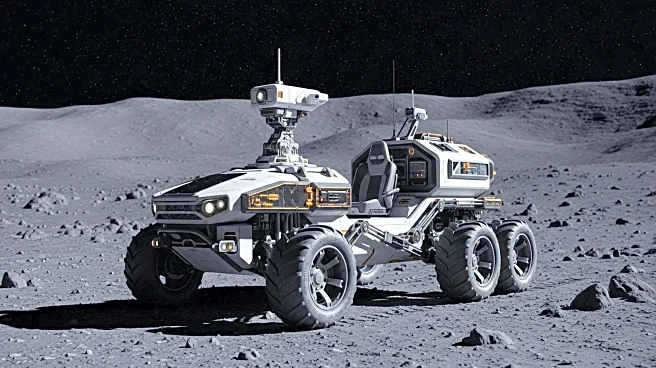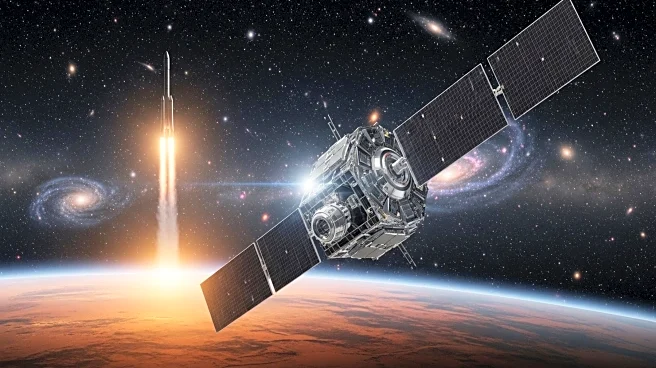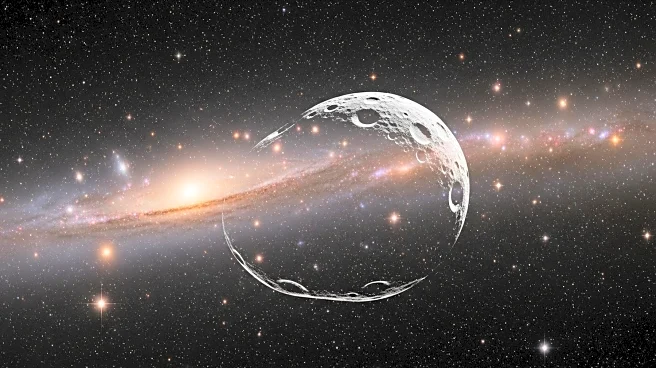What's Happening?
NASA's DART mission has successfully demonstrated the ability to alter an asteroid's trajectory through kinetic impact. The spacecraft collided with the asteroid moon Dimorphos, ejecting 35.3 million pounds of rock and dust into space. This debris formed a tail visible for nearly 12 days, resembling a comet's tail. The impact significantly altered Dimorphos' orbit around its parent asteroid, Didymos, shortening it by 33 minutes. The mission utilized the LICIACube satellite to capture images of the impact, providing valuable data on the ejected material's mass and behavior. This event marks a significant advancement in space exploration and planetary defense, showcasing the potential of kinetic impactors to deflect asteroids and protect Earth from future threats.
Why It's Important?
The success of the DART mission is a pivotal moment for planetary defense, demonstrating that a relatively small spacecraft can induce significant changes in an asteroid's trajectory. This capability is crucial for protecting Earth from potential asteroid impacts, which could cause regional devastation. The mission highlights the importance of understanding asteroid composition, as different types will react uniquely to impacts. The findings from this mission will inform future strategies for designing effective asteroid deflection systems, ensuring Earth's safety from hazardous impacts. The ability to enhance deflection through ejecta offers a dual mechanism for altering an asteroid's course, making planetary defense more robust.
What's Next?
Following the DART mission, further research and discussions are expected to focus on enhancing our understanding and capabilities in space-based planetary defense. Future missions will need to consider asteroid composition, as different structures will react differently to impacts. The knowledge gained from this mission will aid in the development of spacecraft capable of deflecting potential threats. Ongoing research is essential to refine these technologies and ensure effective planetary defense strategies. The success of the DART mission opens new possibilities for space exploration and the protection of Earth from cosmic threats.
Beyond the Headlines
The DART mission has provided unprecedented insights into the aftermath of an asteroid collision, illustrating a potential strategy for Earth's protection. The mission emphasizes the impact of human ingenuity on space exploration and planetary defense. As we continue to explore these possibilities, the focus will be on refining technologies to ensure our planet's safety in the face of cosmic threats. Understanding the dynamics of debris ejection and asteroid composition is crucial for designing effective deflection missions, highlighting the importance of ongoing research in this field.

